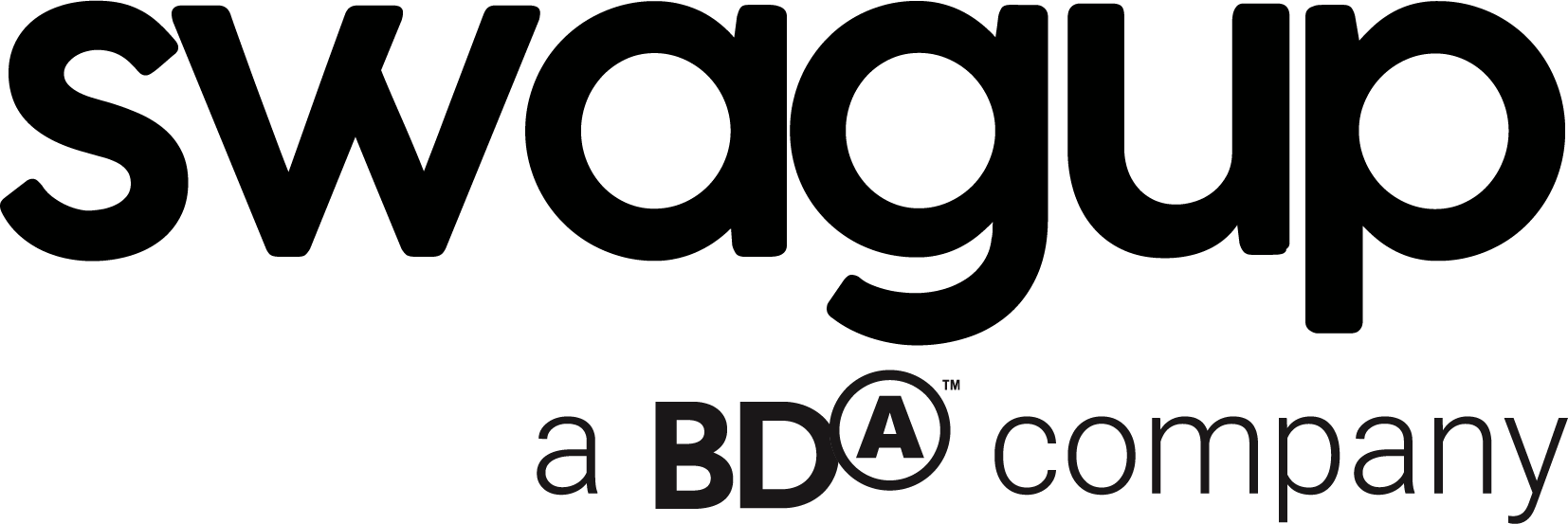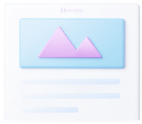
Swag has established itself as a stable component of the corporate world. The biggest brands have embraced thorough, well thought out, high quality swag complemented by big budgets to spend exclusively on promotional material. Everyone’s jumping on the bandwagon and why wouldn’t they? Swag simply works, as it has since forever.
The underlying spirit of custom branded swag lies in its uncanny ability to foster a community. To lend a sense of belonging to employees and fans, and to help stakeholders feel a sense of belonging to the company’s mission. Swag has vicariously allowed people to align with a brand’s values and goals, cementing its position in today’s world. So how does the future look? After writing on Swag for the past few months, while collaborating with one of the most innovative firms in the industry, here’s what I think the future of swag looks like.
▶ SKIP AHEAD 🚀
What Does the Experiential Future of Swag Look Like?
What About the Not-So-Experiential Future of Swag?
Before we dive into the future, let’s have a look at the roles swag play today.
The Swag x Culture Superpower
Swag cannot exist without culture. While the opposite isn’t absolutely true, let’s face it; a culture is incomplete without the swag to realize it. Culture has turned out to be the most significant marker of a brand’s success. It determines essential stuff like reputation, employee satisfaction, and ultimately, revenue. Culture has turned out to be so important that employees – especially the younger and newer members of our workforce – give more importance to it than compensation, with 77% of participants saying that culture is the first thing they judge a company on when applying for a new job (2019 Glassdoor Survey).
The consensus is clear: companies with a great culture attract the best talent.

Today, modern teams leverage swag in incredible ways to realize culture. Both innovative employees and organizations are socially conscious about working with people that share their values, in spaces that reflect these values. From Black Lives Matter to intentionally choosing eco-friendly and sustainable swag. People new to swag, or those only familiar with it on a surface level, only see swag as “stuff we all get.” But the more you work with swag, the more you realize that the best swag is often centered around great cultures. Culture conveying swag has become a quintessential part of the modern workplace. And we’re already loving being a part of this evolution.
What Does the Experiential Future of Swag Look Like?
Since time immemorial, businesses have been searching for the best way to connect with the customer. The bigger you get, the harder this becomes. We’ve all received countless mugs, t-shirts, chargers and other custom branded paraphernalia which were discarded, lost or simply forgotten about a few days later. So what’s the solution?
Going experiential.
Business owners are already ditching traditional swag trinkets for less tangible, experiential stuff. While it may sound absurd that businesses are favoring one-time experiences instead of tangible goods that can last longer, things get clearer when you look deeper. Traditional swag items simply add to the existing clutter of swag that the individual has received and thus doesn’t hold much marketing value.
A unique experience on the other hand leads to a happy memory and works better because more emotions are involved. Now you can see why a one-time experience can work better than custom branded physical goodies. The key here is innovation, which means you’ll stand out.
This doesn’t mean physical swag is going away anytime soon. Remember we talked about how swag has gotten more creative? A huge part of that is how physical swag is getting more experiential. With gift cards, special packaging and themed swag packs, more and more swag curators are taking the experiential route. And it’s been working out well for them.
When talking about experiential swag, we also have to talk about the tech opportunity of the future. Current tech improvements in growing fields such as AR, VR and AI have been embraced by organizations and employees, with brands even designing custom AR-based content for their teams.

As the tech matures, it’s inevitable that we’ll see more and more of it in swag. Technology offers one of the cheapest mediums to experience experiential swag and as it gets more and more accessible in the future, digital swag will only get more and more commonplace. For example, alternate reality events could replace company outings. There’s so many possibilities, we can’t think of them all. But we do know there’ll be experiential swag to complement future experiential tech.
Experiential swag by itself also comes with several advantages over physical swag, the first of which is sustainability. Curated experiences mean less waste, as there aren’t many physical elements being produced in the first place. Finally, experiential swag, due to its inherent digital nature, makes measuring and monitoring easy. Brands now have more data collection touchpoints, more data to work with and better tools to analyse the elaborate data.
What About the Not-So -Experiential Future of Swag?
The future of swag is all about the influence swag has on company culture, employee well-being and its marketing capabilities. As we go forward, swag is undoubtedly set to play an even bigger part in our daily work lives. Today, we see big brands and small forward thinking businesses using swag to enhance culture, highlight branding and show appreciation. Few other stuff can provide the personalized tactile element that swag can.
And the movement is already underway. The US promotional products industry is today worth over $15b. That’s an insane number of brands investing in custom branded promotional products. This number will undoubtedly see a healthy, steady increase in the near future. Corporate gifting is and always has been an indispensable part of elaborate business strategies.
How The Pandemic Changed Swag
The pandemic has forever changed how we work, and swag has changed along with it. During the pandemic, countless brands leveraged swag to make the switch to remote work easier. And it’s easily explained:
Culture comes easy when people are sharing a common space. The frequent banter between employees and the hustle and bustle of the office allows the values and culture of your brand to shine through.
With remote work, culture was the first to get hit. Working from the comfort of our own homes meant that we were less exposed to our organization’s culture and values. Swag turned out to be the most effective way to retain a significant part of that culture. From remote employee onboarding kits to virtual cocktail parties, swag helped the corporate world get through the pandemic.
As things stand now, remote work is definitely here to stay. Several large firms have formally embraced the idea of having an increasingly remote workforce while many others are experimenting with remote work approaches. As the prevalence of remote work increases, so will the prevalence of swag that’ll be sent home.

Another major byproduct of the pandemic is that it led the way to more creative uses for swag. From selling branded face masks to sending branded merch to those who signed up for online events, swag found itself being used more creatively than ever. As more brands realise that swag is a great tool to be creative with, we can expect to see more adopters.
End result: Swag of the future will witness more creative executions.
A few examples of this creativity can be seen today. In 2016, Porsche bundled a foldable map into an issue of the Outside Magazine. Readers could unfold the map, download the specified AR app and race a 718 across a map, take a 360° tour of the car and even build a model to their liking. This is a great example of experiential swag and an even better example of experiential marketing, the stuff swag was born for.
As to what kind of swag will be most popular in the future, it will undoubtedly be things that we use daily. This means mugs, face masks (for the near future), earphones, bags and other similar stuff. The more often you can flaunt it, the more popular the swag item. Collectible swag that’ll be sold for a premium on Ebay years later isn’t too far fetched of a notion either. The first batch of Coca-Cola bottles are today rare collectibles.
A piece on the future of swag wouldn’t be complete if we didn’t talk about swag logistics. So let’s do just that.
Designing, sourcing, producing and delivering swag has always been a long, drawn-out, expensive (both in terms of time and money) process. Swag is all about interacting, and sometimes the delays can steal away some of that excitement. SwagUp’s tech is headed towards streamlining the entire swag process, from ideation to delivery. Using swag to build your brand should be the easiest thing ever, and we’re on a mission to make that happen at scale.
Swag logistics is also another area where experiential swag has an advantage over traditional swag, since digital products can be created and shipped faster, it can lead to a better overall swag experience.
But how about something more innovative? Imagine you’re hosting an event. What if you could match your attendees to personalised swag? We’re talking completely different swag packs distributed depending on the profile of each individual. This kind of powerful personalisation isn’t too far away. As supply chain technologies evolve, our processes and practices will too. We can’t wait to find new ways to build and execute swag.
Why Swag Works So Well

Swag’s primary task has always been to convey brand culture. The colors, the accompanying message and the nature of the items themselves are all a reflection of brand culture. Swag that accurately conveys this is a strong tool to influence your company culture. Having a successful swag strategy forces your brand to have a solid brand voice and marketing strategy. By form, swag requires you to be thorough throughout your brand communication, else it’ll fail to bring you the desired results.
Another reason swag works so well is due to the reciprocity effect. When someone receives a freebie, they are likely to give back by paying attention to what you say, recommending your brand to others or straight up making a purchase. Everybody likes receiving free stuff and most are inclined to pay it back in some form or the other. This is exactly why swag has been a consistent winner in marketing strategies of all sizes, across all industries.
Swag has today evolved into a parameter fans, stakeholders and employees measure a brand by with regards to culture, values and overall sense of quality. While this is only going to get more prevalent in the future, swag will also see itself being used more creatively by brands to woo both employees, customers and fans.
Swag in the future will also see a lot of experiential elements added to the overall package, with standalone experiential swag becoming more popular. The advantages are solid and more and more brands are choosing to move in the direction.
Further, swag has proven itself as a solid part of marketing strategies. As technologies advance and brands innovate, swag will undoubtedly get the attention it deserves. At SwagUp, we realise this and we’re working hard to prepare swag for the future.

Our mission is to make the swag process as simple as it gets and to provide a true end-to-end swag fulfilment system. We’re proud to announce that we’re moving toward this goal with our tech and teams. Swag has an exciting future ahead. And boy, are we stoked to be a part of it!
Excited to boost your swag strategy? Get in touch with a Swag Expert today! 🚀





